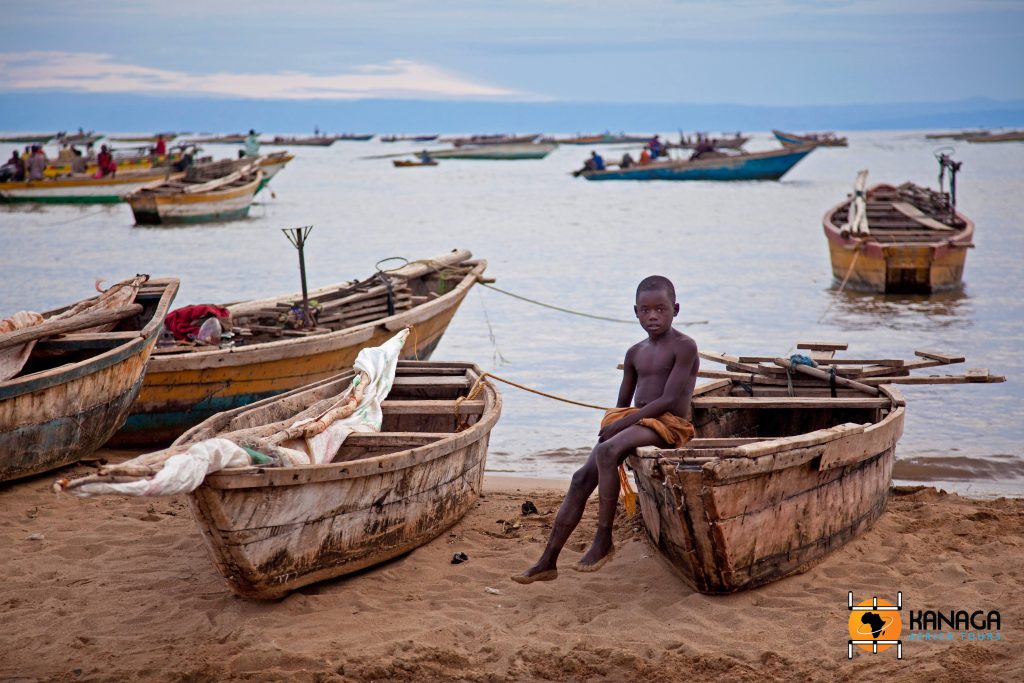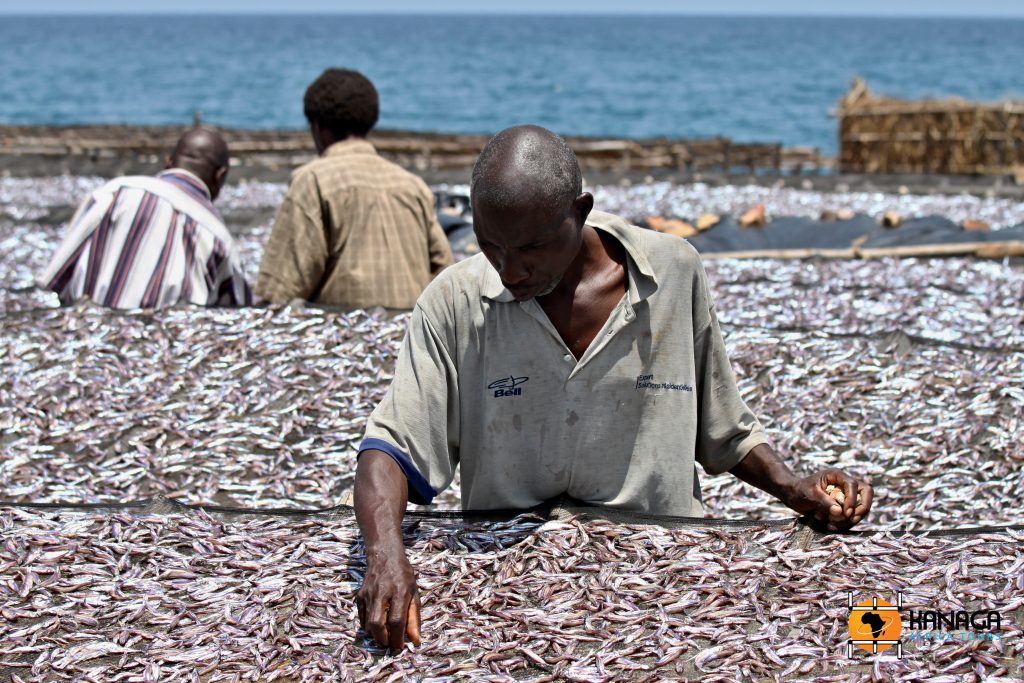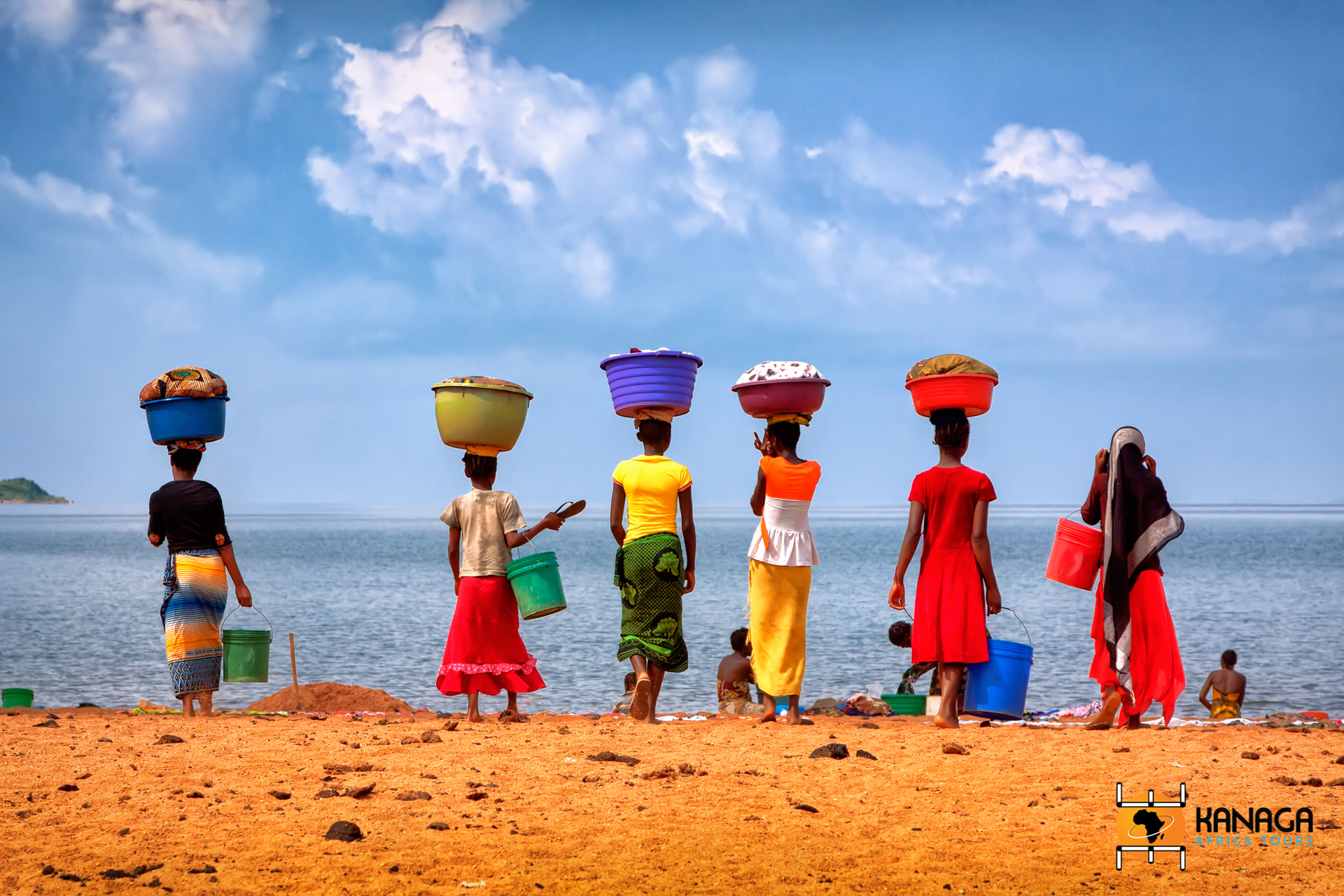Lake Tanganyika, the second largest lake of the continent, shared with Tanzania, the Democratic Republic of Congo and Zambia, dominates the landscape of western Burundi and the capital Bujumbura, and is its economic and tourist centre.
Located in one of the great pits of the Rift Valley, Lake Tanganyika is the deepest lake on the continent, first visited by Europeans in 1858, during Burton and Speke’s famous expedition in search of the source of the Nile.
Fishing is an ancient activity on the very fishy Tanganyika coast, where pegagic fish such as ndagalas (silver sardines) and large predators such as sangala (Nile perch) live together. In addition to artisanal fishing, carried out by the inhabitants of the villages along the shores of the lake, using pirogues made from tree trunks and mainly at night with the use of a lamp or torch, there is now industrial fishing using purse seines or trawls, which is certainly more profitable but also invasive.
The lake is also one of the country’s tourist attractions. To the north of the capital are the best equipped beaches, in the Kajaga area, of which Saga is certainly the most popular. South of Bujumbura, the RN3 road runs along the banks of the Tanganyika for 130 kilometres to the Tanzanian border, and in this Swahili-influenced area the most popular beaches are those of Resha-Minago and Nyanza-Lac. But beware, it is not uncommon for relaxation to be interrupted by the appearance of a hippo or crocodile!







